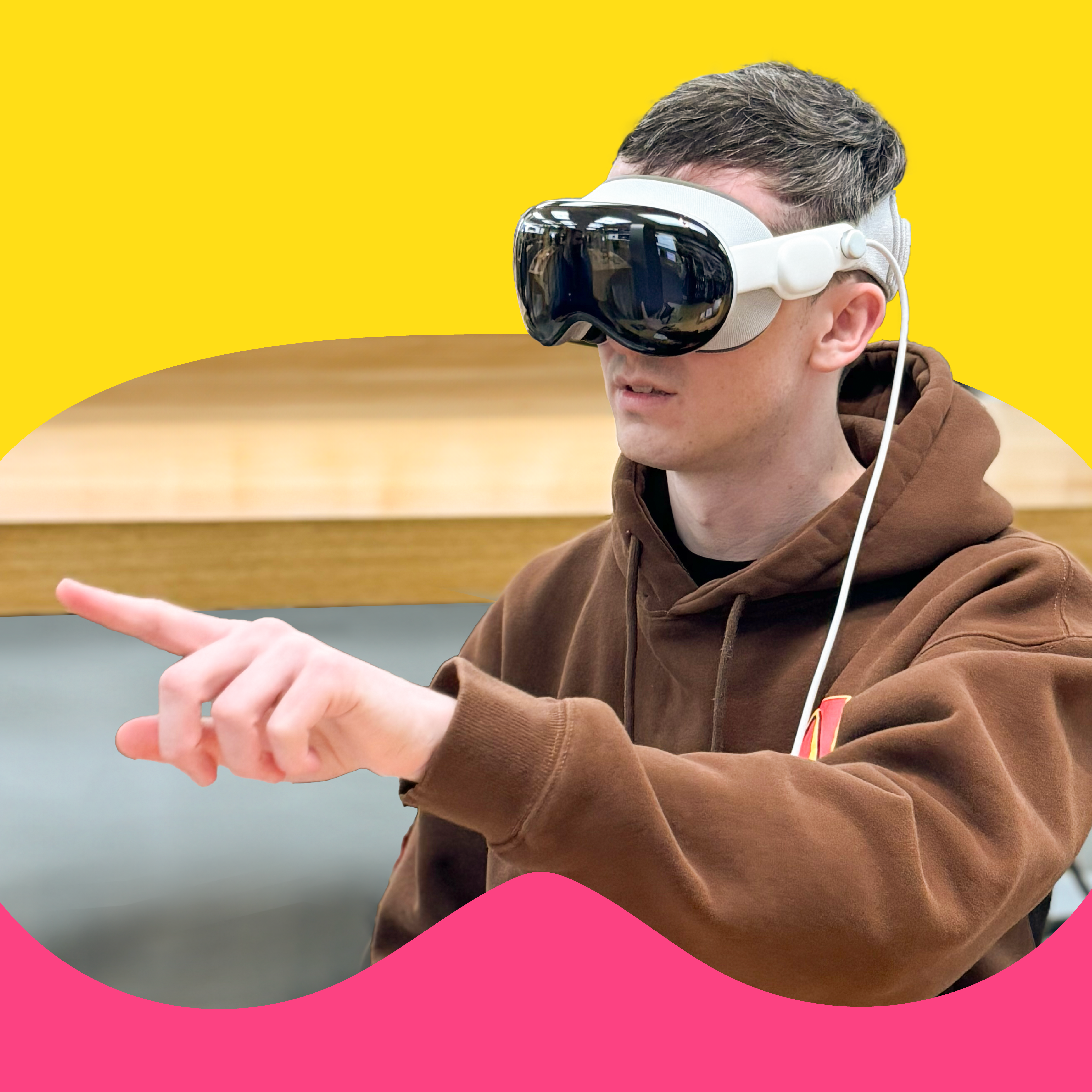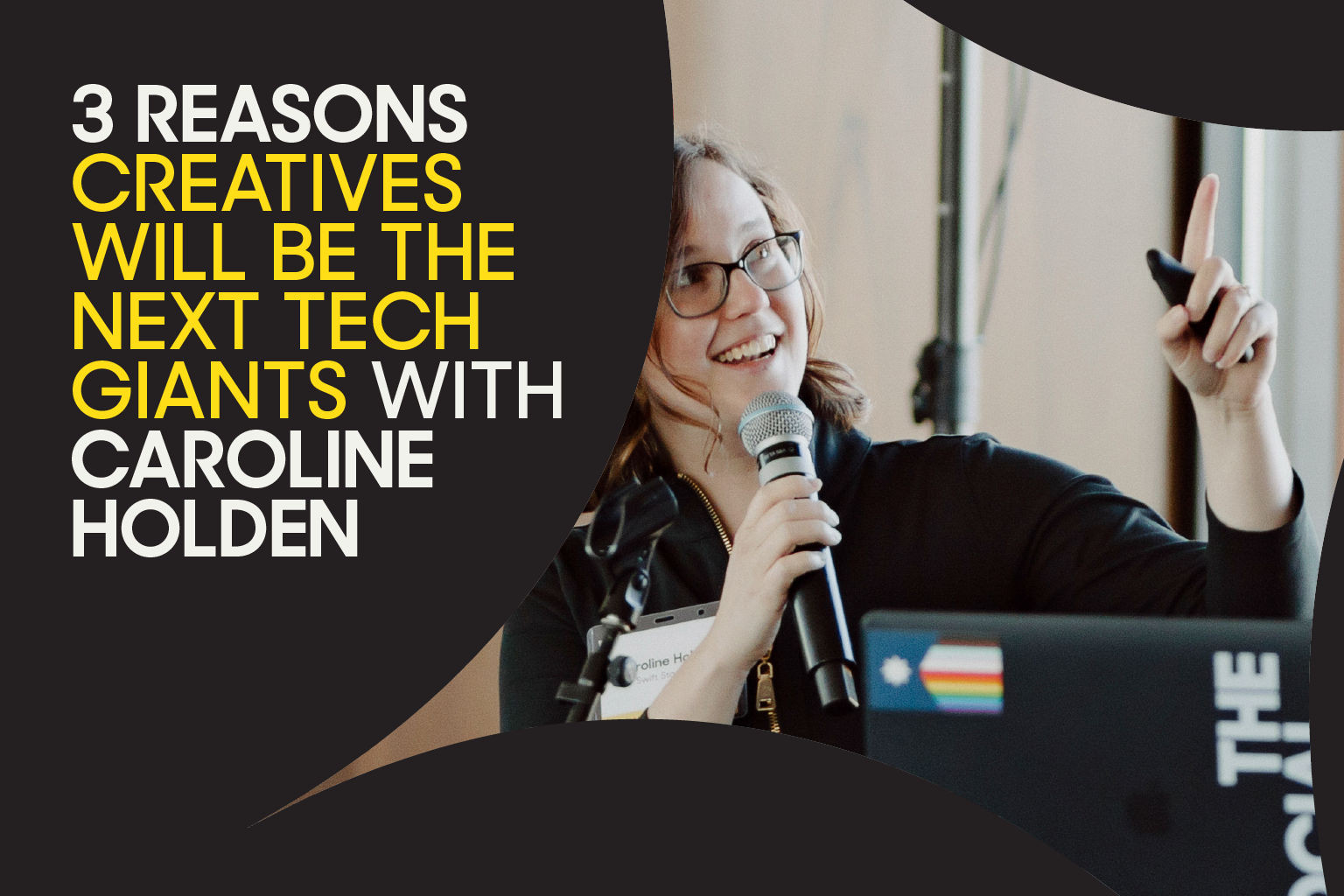You’ve probably heard that Apple released the Apple Vision Pro. Even if you don’t know very much about it, you’ve probably seen the viral pictures and videos of people using it on the Subway in New York or on their Delta flight.
@virtual_amir Escape to a movie theatre to watch 3d Mad Max on a big screen while squished in coach on @delta. Yes please! @apple Vision Pro travel mode is a game changer. #applevisionpro #visionpro #fyp #madmax #appletv #technology #travel
♬ Baiana – CloZee Remix – CloZee & Barbatuques
We’re always paying attention to the future here, and a couple of us from The Social Lights have already gone to the Apple Store to get a free 30-minute demonstration where we got to use the device.
Click the image to read our Chief Creative & Strategy Officer Greg Swan’s POV on Vision Pro:

And here’s our Sr. Social Media Manager Louie Shearon’s point of view on Vision Pro:
After spending 30 minutes using the device, my main takeaway is: it’s not social enough!!! Let’s unpack what I mean by that.
The Apple Vision Pro is an incredibly isolating device. When you’re using it, you’re the only one who can really see what’s happening. If you own an Apple Vision Pro, it is locked to your irises. So if you want to show a friend or family member what you’re seeing, they can’t put on the headset and see it for themselves. The device does have a guest mode that allows others to use it, but it’s very limited and is cumbersome to setup, because you have to set it up every single time someone else uses it. When I asked the Apple employee about it, he said we don’t share our iPhones with others, and Apple doesn’t expect us to share the Vision Pro with anyone either. That’s a pretty bold take.
Now that we’ve covered the IRL social elements of the headset, let’s get into the virtual social elements of the Vision Pro. There aren’t very many today. While it does have a web browser that allows you to visit various social media websites, it’s incredibly difficult to share anything about your experience with others.
There is a distinct lack of shared experiences between multiple users. For example, if you and a friend both have a Vision Pro, there are currently very few experiences that allow you to see each other or interact with each other in a virtual world. There is a FaceTime feature that shows your face in real time, but it…needs some work. The closest thing to a social experience I could find is joining a FaceTime call with another Vision Pro user, and watching a movie or show together in SharePlay.
When it comes to social media, there are no Vision Pro optimized social media apps other than TikTok. One of the biggest controversies surrounding the launch of this device happened when YouTube and Netflix said they would not be building Vision Pro versions of their apps. I fully expect that to change in the future, but they are likely waiting until there are more Vision Pro users out there before they designate more resources for it.
Apple is far from the first company to release a compelling VR experience. Meta has invested heavily in their VR ecosystem, and there are over 40 applications on their app store have done over $10 million in revenue. It’s clear that the VR space has a ton of potential, and we can expect to see millions in revenue across Apple and Meta sales in the coming years.
So, if you’re a brand, what should you be doing in the VR space? What are brands doing now? At the launch of the Apple Vision Pro, there were only 600 apps on the App Store that were compatible. There are a few brands that made a significant effort to have one of the apps available at launch. Crumbl Cookies launched a Vision Pro app that allows you to simply order cookies to an address. Zillow released an app as well, featuring an immersive house walkthrough feature. These two apps aren’t anything groundbreaking but demonstrate that these brands are taking the opportunity to consider how they want their audience to perceive them. They want to be known as brands that ride the cutting edge of technology and social media, and they’re acting on it. It’s also an opportunity to test and learn with your audience to see how they use your product on a new platform.
I’d recommend scheduling a free demo to try out the Vision Pro for yourself at your local Apple Store. It’s a great preview of what is around the corner in tech, social, and culture.




